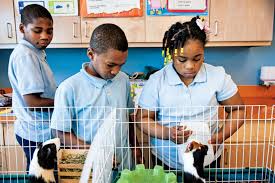Homeless People And Their Companion Animals
Dr. Gillian Squirrell, Working Dog LLC
 Dr. Gillian Squirrell is a trained and qualified Canine Hydrotherapist, has a Masters in Canine Science and is an ardent attender of various dog trainings, conferences and events. She has developed a nonprofit program, Working Dog LLC, for vulnerable adults and young people working with dogs as a way to develop interpersonal and workplace skills.
Dr. Gillian Squirrell is a trained and qualified Canine Hydrotherapist, has a Masters in Canine Science and is an ardent attender of various dog trainings, conferences and events. She has developed a nonprofit program, Working Dog LLC, for vulnerable adults and young people working with dogs as a way to develop interpersonal and workplace skills.
Dr. Squirrell tells us that Working Dog LLC has a small fund for the development of ideas about how to improve support for homeless people and their animal companions. As we know, these clients and their animals can fall through gaps in service provision.
Should homeless people have pets? Dr. Gillian states that that is an interesting conversation starter. This is a very under-researched and little understood area. There is a lot of judgment attached to homelessness as well as a lot of fear. People range on a continuum from "Absolutely they shouldn't, they can't look after themselves, to thinking it's a really cute thing," states Dr. Gillian.
It is an area that Dr. Gillian has explored from several angles, including:
- The meaning of the animal for the homeless person and the way being with an animal impacts their role and identity, as well as offering benefits and causing limitations for the homeless person.
- The welfare issues pertaining to animals that live with homeless people.
- The ways in which homeless services providers and other systems respond to homeless people with animal companions.
 Another way to look at the situation is that a lot of animals are sitting home alone for 8 hours a day or more waiting for their owners to come home from work. But animals with homeless people are with their people 24/7.
Another way to look at the situation is that a lot of animals are sitting home alone for 8 hours a day or more waiting for their owners to come home from work. But animals with homeless people are with their people 24/7.
Thee animals are also good therapy for the homeless, and sometimes the animals are all they have. The homeless feel that their animals are a huge value to them and offer unconditional love without strings. Their animals offer support without judging them and the current situation that they are in.
When you're homeless, life is very difficult. Think of the things we take for granted like washing our hands or getting something to eat, even putting on clean clothes. These things are very difficult and take up a lot of time and a lot of resources for someone who is homeless.
One of the things that someone who is homeless can do something about is being with and looking after their animals. This can give them self-esteem and self-regards. They can be the champion for their pet. They can be providing at least something for their animal, even if it is just sharing their food.
Do the homeless ever get animals and use them to beg for money? While in London, Dr. Gillian stated did come across some situations where people used puppies to beg, what she calls, "Puppy Pimping." In fact, small cute dogs were actually being passed around from one homeless person to another as a way of getting more income. Dr. Gillian states that this is very common in London, but not so much in the United States.
Want to help homeless pets? You can help locally by donating pet food to your local resource connections or homeless shelter.
Dr. Gillian has been giving out supplies, trying to develop strategic responses within her local County, reviewing the literature, talking at conferences and collecting data both from local homeless and service providers and from providers within the UK.
Visit Website
Cuddly Co-Workers
Lisa Rogak, Cats on the Job
 Author Lisa Rogak found 50 cats that have jobs. This wasn't easy. Cats are notoriously not workers, unlike dogs. From Grumpy Cat to Kitty Models, Lisa will share the stories behind these frolicking felines.
Author Lisa Rogak found 50 cats that have jobs. This wasn't easy. Cats are notoriously not workers, unlike dogs. From Grumpy Cat to Kitty Models, Lisa will share the stories behind these frolicking felines.
Believe it or not, around the world, there are cats earning their keep. Some were mousers, like Princess, a black cat who worked at Mill Ridge Farm's Stables. Some were circus performers, like Tuna and her furry friends in The Amazing Acro-Cats, and some were even politicians, like Mayor Stubbs who hled office in Talkeetna, Alaska. While interviewing cats for her book, even Lisa said she was amazed at how industrious some of them were.
Lisa has written many animal books, from dogs of war and dogs of courage, and admits that this was a goofball book to research. She stated, "I cracked up with every one," as cats don't have the best reputation for being good workers.
Some of the jobs these cats had were being models, where they modelled cat costumes and wigs. There were also cat actors in movies and television commercials, with one cat appearing in the Star Trek Series, as a reoccurring character. Lisa added that it's hard to film a cat and get them to pose on cue if they can't be bribed with catnip or food.
Then there are service and therapy cats. One of the stories in her book, "Cats on the Job," is of a cat that went to nursing homes and hospitals. The cat just walked in and jumped on a patient's bed and instantly made not only the patient feel better, but the patient's family and staff members too.
 There were also two cats that worked at an insurance office and even had their own business cards and job titles. The staff used the cats as screening for potential employees. If someone came in for an interview and the cats didn't like the person or the person didn't like cats, they didn't get the job.
There were also two cats that worked at an insurance office and even had their own business cards and job titles. The staff used the cats as screening for potential employees. If someone came in for an interview and the cats didn't like the person or the person didn't like cats, they didn't get the job.
And let's not forget Mayor Stubbs, an orange Tabby who held office in Talkeetna, Alaska. It turned out the previous Mayor wasn't doing his job, so everyone said, "Let's just let a cat do it!" so they did.
Other working cats were specifically hired for their superb mouse-catching skills, while others had more focused careers as hosts and bed-warmers at inns and hotels, as assistants to bike messengers, or as companions at bookstores. Some even provided therapy and comfort as diabetic alert cats and service cats for veterans and children.
Lisa tells us that most cats were not trained for these positions. Basically the cat just showed up, had a certain skill, and created their own jobs.
Lisa Rogak is the New York Times bestselling author of more than 40 books. Her works have been mentioned in The Wall Street Journal, Parade Magazine, USA Today, Family Circle, and hundreds of other publications. While Lisa Rogak doesn't currently own cats, she says she is a "Former ex-crazy cat lady."
Visit Website
 Pet Halloween Costumes: Spook-tastic or Just Crazy? -Dr. Debbie
Pet Halloween Costumes: Spook-tastic or Just Crazy? -Dr. Debbie
Will Fluffy or Benji be dressed up for Halloween this year? Pets are increasingly recognized as family members and often included in the holiday costume craze. But are pet costumes just for human folly, or do pets actually LIKE sporting the costumes, hats and accessories?
Admittedly, I fall among those that do indulge in this practice, but my pets enjoy wearing Halloween costumes.
Years of positive reinforcement with treat rewards, and my dogs will happily wear anything in the off chance of a tasty morsel. The mere sight of a costume starts my Labrador prancing and bouncing as if on a trampoline.
In my home, Halloween pet fun has evolved a step further than most, as I proudly maintain a sizable collection of pet costumes. After 13 years, the collection of doggie costumes includes firemen, doctors, princesses, cowboys, police officers, pumpkins, caterpillars, pirates and skeletons spilling from the overstuffed confines of the cabinet.
My pet costume collection is akin to Katherine Heigl's character in the movie "27 Dresses," in which her mass of bridesmaid dresses fills a closet and generates smirks from others.
Call me crazy, but I adore seeing my critters ham it up for Halloween. And clearly I am not alone. According to consumer surveys by the National Retail Federation, 170 million Americans will be celebrating Halloween.
 Among those individuals 16-percent will be dressing the family pet in costume too. That's a lot of consumer spending on pet wear when budgets are tight, but the smiles and giggles arising from seeing your pet dressed in a spooky or silly costume, is well worth the expenditure.
Among those individuals 16-percent will be dressing the family pet in costume too. That's a lot of consumer spending on pet wear when budgets are tight, but the smiles and giggles arising from seeing your pet dressed in a spooky or silly costume, is well worth the expenditure.
Some might argue that pet costumes are frivolous or humiliating, but I disagree. Dogs enjoy costumes when introduced in a positive manner, just as they do with gradual acclimation to car travel or swimming. Plus, a dog is devoted companion and wishes to please its owner.
My own dog family adores the celebration and attention they receive. Cats on the other hand, may not enjoy any part of dress up and are often indifferent to the idea of pleasing or serving us, as it is often the other way around.
Featured veterinarian known as "Dr. Debbie" on national pet radio program, Animal Radio. Ebook author of "Yorkshire Terriers: How to Be Your Dog's Best Friend"; "Pugs: How to Be Your Dog's Best Friend"; "Mini Schnauzers: How to Be Your Dog's Best Friend"; and "Shih Tzu: How to Be Your Dog's Best Friend." Dr. Debbie's books.
Visit Website
Animal Radio News - Lori Brooks
 Human/Dog Bond Dates Back Years
Human/Dog Bond Dates Back Years
The bond between humans and dogs may be much older than we once thought. A group of researchers discovered an ancient wolf bone and say its DNA suggests dogs diverged from wolves as far back as 40,000 years ago and point to the ancient wolf as possibly the most recent common relative of modern wolves and dogs. Another implication of the study: re-imagining how dogs became an important part of human society. The most prevalent theory is that dogs became domestic creatures once humans settled into agricultural-based communities. But humans could have also caught wolf cubs and kept them as pets and that gradually led to wild wolves being domesticated.
Illinois Made It Illegal to Leave Pets Outside in Hot or Cold Weather
Every year we hear about pets and children left to die in hot cars or freezing to death outside in winter. Leaving the family pet outside in extremely hot or cold weather could result in up to a year in jail and a hefty fine. The Illinois bill makes it a Class A misdemeanor to expose dogs and cats to life-threatening situations for prolonged periods of time in extreme heat or cold and make it punishable by up to a year in jail and a fine of up to $2,500, though judges would have discretion to impose lesser sentences.
 Pets In The Classroom Have A Profound Impact
Pets In The Classroom Have A Profound Impact
A study reveals that having a pet in the classroom may provide real educational value through leadership skills and character building. Despite some of the challenges to having a classroom pet, such as coping with loss and teachers spending their own money to care for the pet, the study found six objectives proving the benefit of caring for a classroom pet, like teaching children responsibility, compassion, empathy, respect and leadership through animal care and providing relaxation when children are stressed. Many teachers told the study's researchers about the profound impact classroom pets had on their students, especially students in low-income areas who are unable to have pets in their family.
Weather Tips For Pets
If your companion pet is a sun seeker and has a thin or light-colored coat make sure you put sunscreen on those vulnerable areas, like their nose, face and tips of their ears and their belly for those pets who like to sleep on their backs in the sun. Just be sure to use sunscreen made specifically for pets, or use PABA-free sunscreen or zinc oxide. When temperatures get extreme, heat exhaustion and heatstroke are concerns, especially for dogs with flat faces, such as Boston terriers, English and French bulldogs, Pekingese and Pugs. For short-faced breeds, as little as 15 to 20 min in high temperatures can be fatal. Dogs with heavy coats or those with heart problems may also be at risk. Signs of heatstroke include: excessive panting, weakness, dizziness, dark red gums, nausea and loss of consciousness. Cool the pet with lukewarm, not cold, water, and get him to the veterinarian right away.
 Rodent Traps Kill Pets
Rodent Traps Kill Pets
There's a warning for pet owners after a cat was found with its head stuck in a rodent trap. It happened in England, but pet owners everywhere are being asked to look out for traps that can also kill smaller pets such as cats and dogs. The cat, which was seriously injured, was caught in a fenn trap, meant for squirrels and rats. Luckily the cat was found and rescued by a good samaritan. Since the incident in England, the SPCA is now calling on people to be aware that setting these traps could be breaking the law. While not illegal if the traps kill rodents, if the trap kills a domestic animal, the owner could be prosecuted by the police.
 Listen to the entire Podcast of this show (#1247)
Listen to the entire Podcast of this show (#1247)





